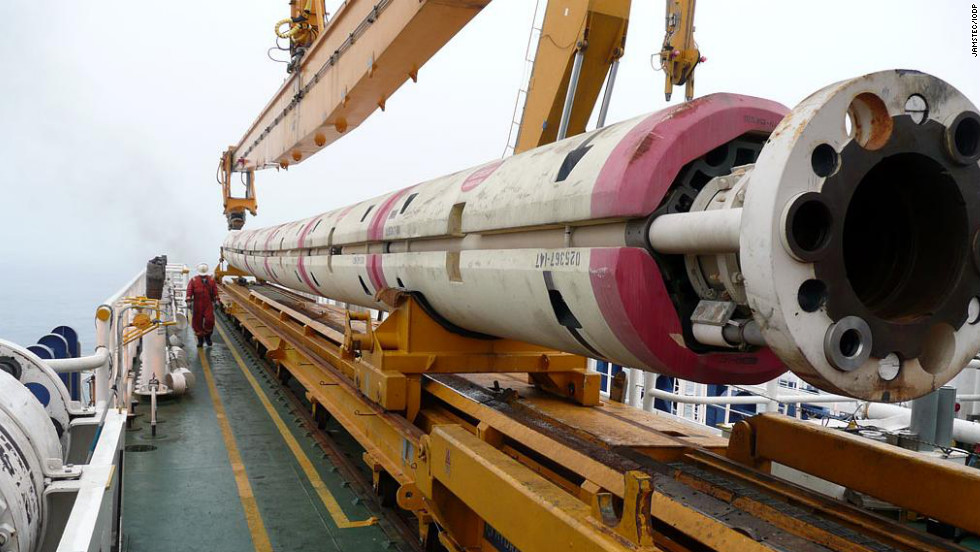Tokyo, April 5, 2017: Aiming for the world’s first-ever direct excavation of the Earth’s mantle, an international research group led by the Japan Agency for Marine-Earth Science and Technology (JAMSTEC) will conduct a preliminary study in the waters off Hawaii in September, The Yomiuri Shimbun learned Tuesday.
The area is considered to be a leading candidate site for the drilling. The research group, including researchers from Japan, the United States and the Europe, plans to intensively investigate the underground structure of the area to find a suitable spot for drilling.
JAMSTEC and its partners aim to realize the excavation of the mantle in the early 2020s — at the earliest — using Japan’s deep-sea scientific drilling vessel Chikyu.
The mantle is located beneath the crust, which covers the surface of the Earth. About 80 percent of the planet’s volume is composed of the mantle. It is formed of rock and moves slowly, affecting the drift of continents, plate movements — which cause earthquakes — and volcanic activity.
Direct observation of the mantle is expected to reveal things such as its hardness and how much water it contains, which could pave the way to better understanding of the plate movements and unveil how the planet was formed.
The preliminary study will be conducted for about two weeks from mid-September in waters northeast of the Hawaiian Islands, using JAMSTEC’s deep-sea research vessel Kairei. The research group will study the thickness and temperature of the crust through sound waves to find a place suitable for conducting drilling and observation.
The oceanic crust — around six kilometers thick — is better suited to reaching the mantle, as it is thinner than the continental crust, which is dozens of kilometers thick. The international team has chosen waters off Hawaii, Mexico and Costa Rica as candidate sites for drilling.
The depth of the area in the waters off Hawaii is about four kilometers, slightly deeper than the other candidate sites. However, the temperature of the area around the boundary between the crust and mantle is relatively low — estimated to be about 150 C — making it easier to conduct observation activities.
Development of a light, sturdy pipe to drill six kilometers into the sea floor was a longstanding issue. However, drilling has now become technically possible partly due to the utilization of newly developed materials, JAMSTEC said.
Another problem is cost — the research group estimates a total of ¥60 billion is needed. “There are still issues to be resolved, particularly the cost,” said Susumu Umino, a professor at Kanazawa University who specializes in petrology.
“However, the preliminary study will be a big step forward for this project to enter a new stage,” Umino said.
■ Mantle
The Earth has a radius of 6,400 kilometers with a triple-layer structure composed of the crust, mantle and core. The mantle is about 2,900 kilometers thick and is located beneath the crust, which is several kilometers to dozens of kilometers thick. The main component of the mantle’s upper part is olivine-bearing rock.Speech







